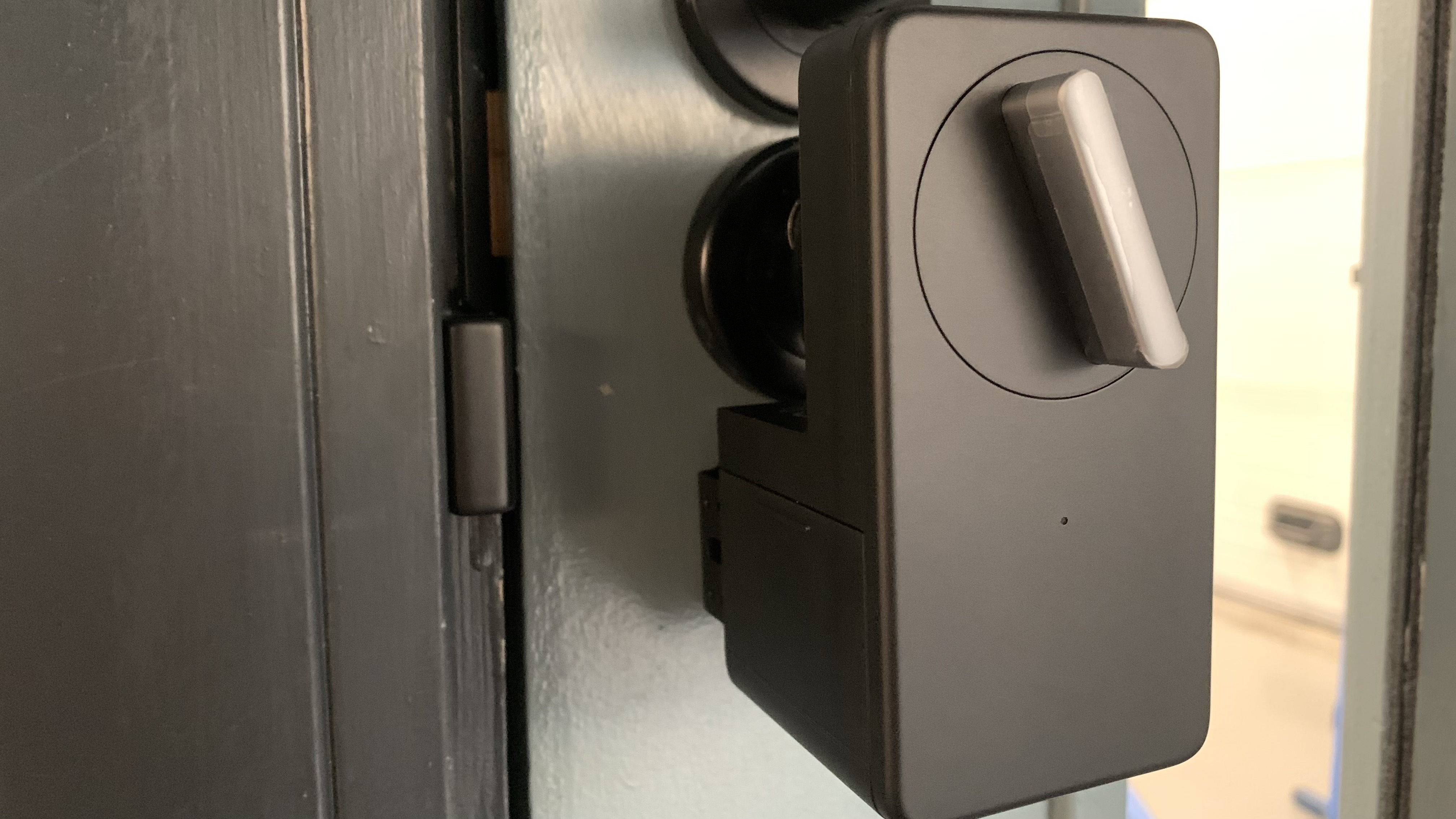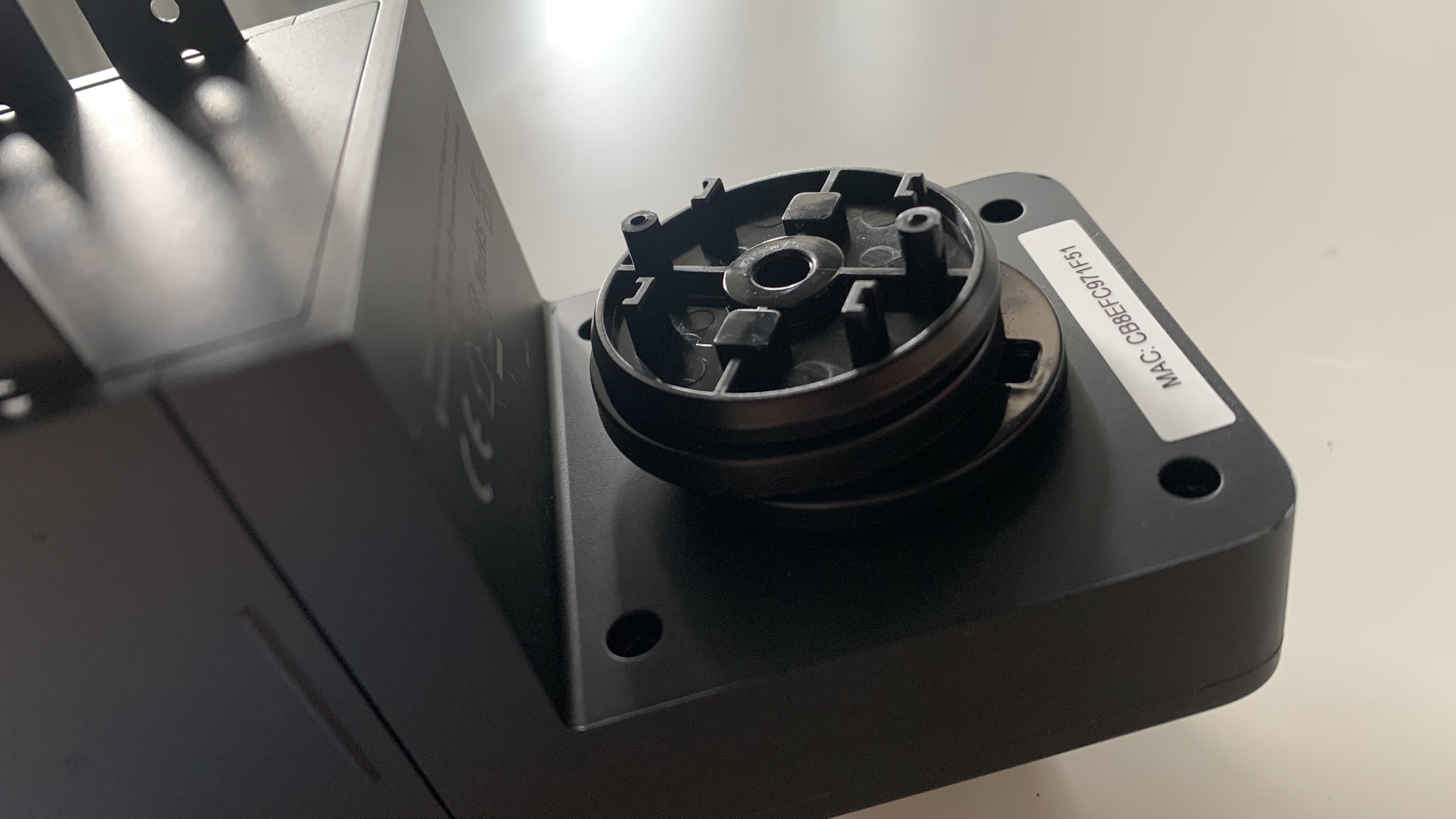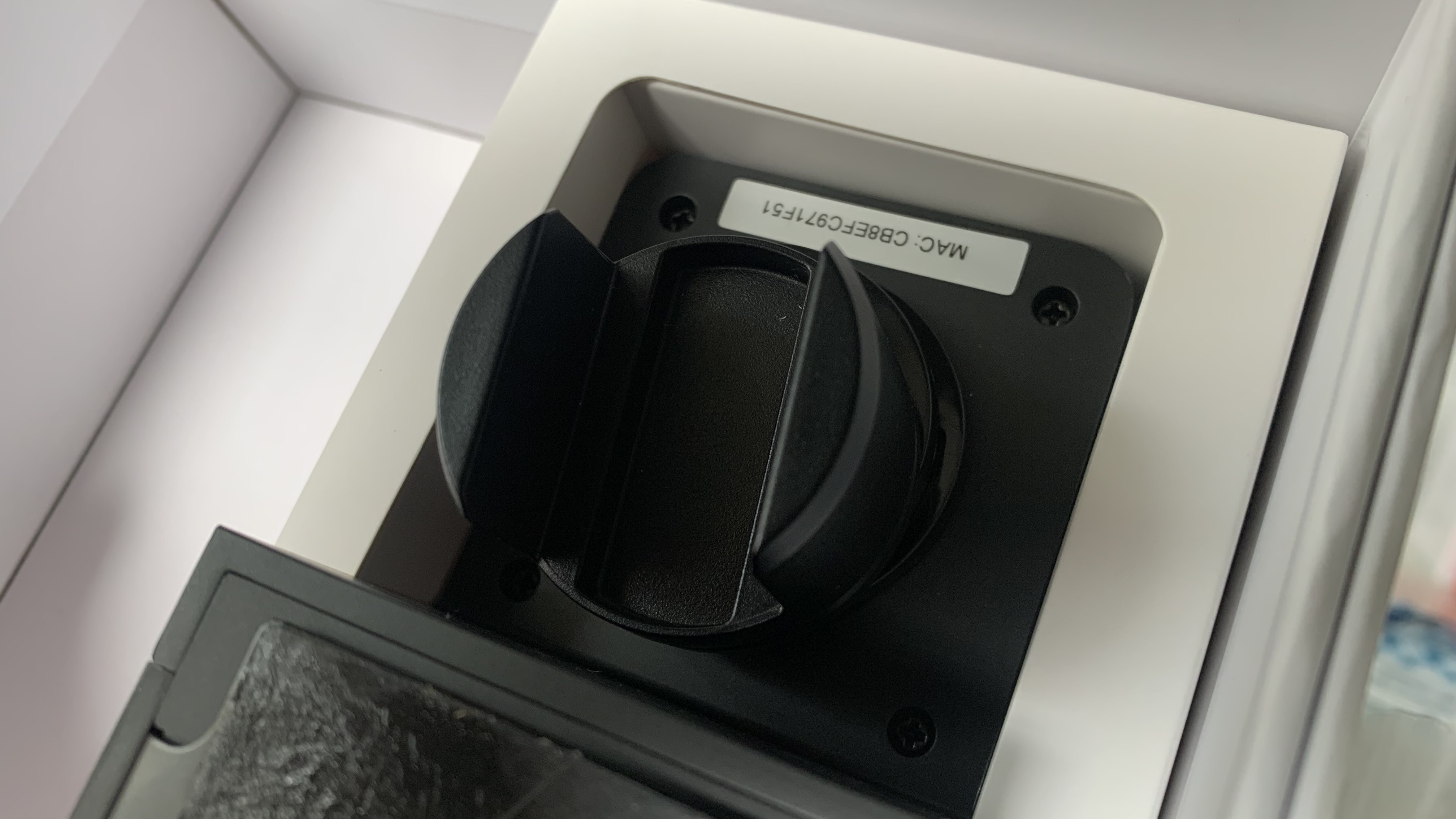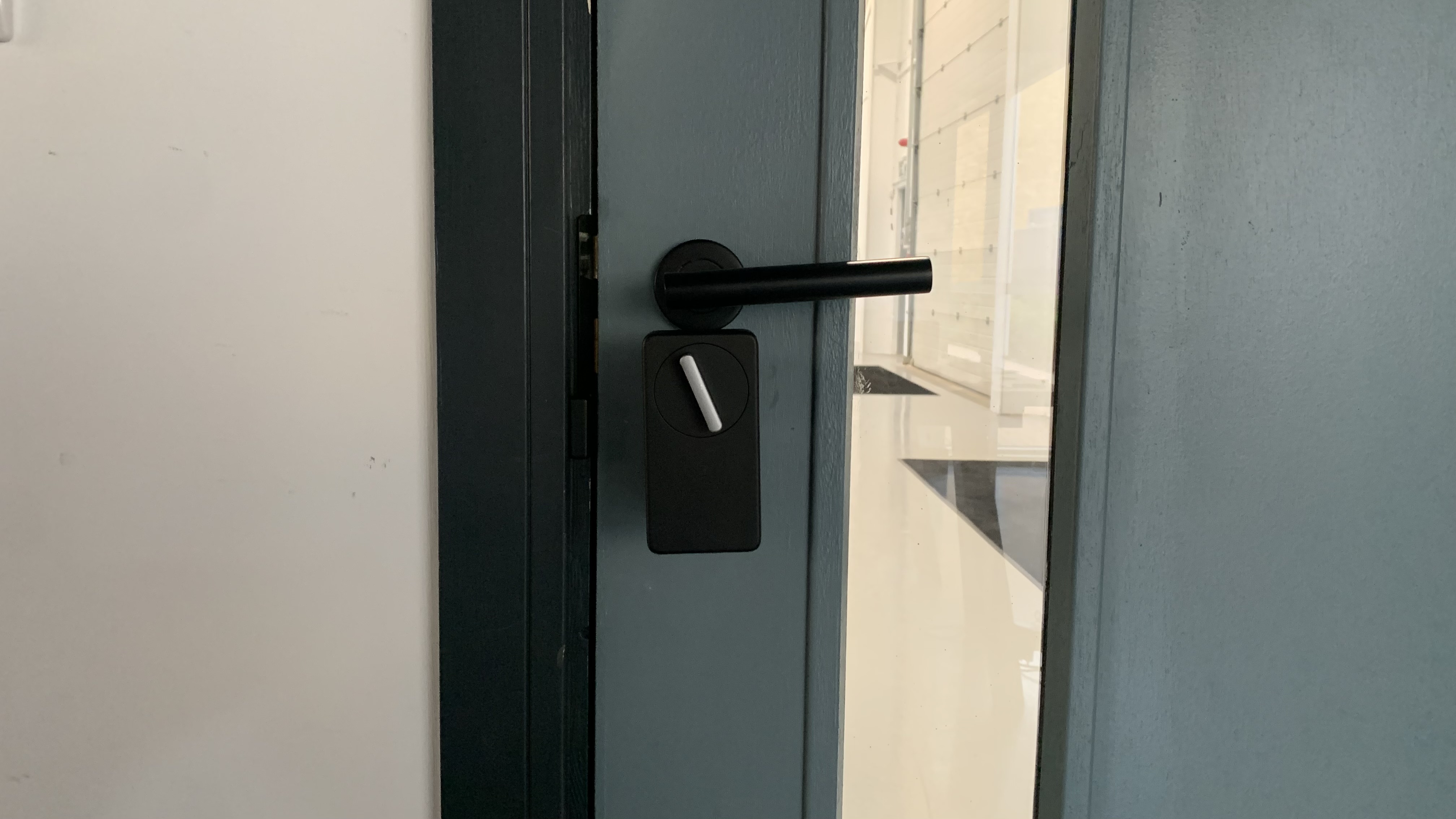Two-minute review
The SwitchBot Lock isn’t your average smart lock. In the nicest way possible, it’s about as dumb as a smart lock can be - but that’s no bad thing.
SwitchBot is somewhat of an anomaly in the smart home space. A majority of its creations are designed for retrofitting smart homes and making regular switches, blinds, and locks a bit smarter, filling an important role in an otherwise daunting transition from dumb to smart home. In line with this, the SwitchBot Lock is essentially a bolt-on motorized thumb turn or key rotator, sprinkling in a few neat features to give it that smart edge. It’s pretty affordable, too, at $99.99 / £129.99, and is available directly from SwitchBot’s online store or Amazon.
The best way I can describe how the SwitchBot Lock works is by comparing it to that steampunk-esque futuristic view of smart locks people in the 60s or 70s would have conceived but with added functionality, thanks to its (albeit somewhat limited) app. Essentially, a motorized thumb turn adapter on the lock just turns the lock on demand when the iOS, Android, or Apple Watch app – or compatible third-party software – sends a command when the user presents a SwitchBot Tag or uses a SwitchBot Remote or Keypad.
- 1x SwitchBot Lock, with adhesive, 2x CR-123A lithium batteries and 4x screws in situ
- 1x PH1 cross-head screwdriver
- 1x magnet with adhesive in situ
- 1x spare adhesive pad for lock, 1x spare adhesive pad for the magnet and 4x spare screws
- 2x SwitchBot tags
Other: Wet wipe, user manual, memo stickers for tags
Instead of removing your existing lock and head-scratching to find out if it’s compatible with the smart lock replacement of your choice, the SwitchBot Lock is almost ambivalent to lock type, so long as you have a single cylinder deadbolt with a thumb turn or a lock that can be operated with a key in situ on either side of the door. You can find out for sure if your lock is compatible with SwitchBot’s handy lock guide.
It’s bulky and a little unsightly at 2.9 inches thick, protruding from the door significantly, especially if your rose is already on the larger side. SwitchBot has tried to make up for this unfortunate reality by keeping the design simple and slick. For the most part, it achieves a decent-looking device, and considering its ease of application versus other smart locks, it’s a concession I find acceptable.
The Switchbot comes in two colorways, black and silver, and is incredibly easy to install - even I as a DIY school dropout found it near-impossible to mess it up. Plus, it’s almost entirely tool-free, barring four screws you’ll need to remove and replace underneath the battery cover to change the adjustable base adapter’s distance from your door. A small screwdriver is included for the task.

Also worth noting is that you can’t share one-time codes for your SwitchBot to give access to people outside of your household. While you can remotely grant access, if you regularly let out the property, or have a cleaner or dogsitter, you’d need to add them to the household within the app.
The batteries are somewhat of a peculiarity; the SwitchBot Lock uses two CR-123A lithium batteries, a common theme among other SwitchBot accessories, including the keypad. They have a decent enough lifespan of six months, based on using the lock 10 times a day, but given that these batteries are more costly than regular batteries, it might be worth investing in rechargeable backups.
Overall, I would absolutely recommend the SwitchBot Lock as the best smart lock to anyone not ready to make the leap to full-blown smart locks, renters, and those on a budget. I expected to find a lot more issues, given it’s on the cheaper side and is a bit of a fixer-upper, but it won me over. I didn’t experience any issues with locks getting stuck, but it’s worth noting customer reviews have noted the occasional issue.
It’s not for everyone, given a few of its design niggles and practicality issues – not to mention its poor app – but for a lot of people, this will more than fit the bill.
SwitchBot Lock review specifications
SwitchBot Lock review: set up

Nailing the placement of the SwitchBot Lock is important, and it’s worth checking out the orientation of your handle, lock, and any windows on your door before purchasing the SwitchBot Lock.
While it can be installed horizontally or vertically, the door I tested on had a handle above the lock and a window to the right, meaning I had no choice but to put the SwitchBot directly below the handle, knocking the clunky device whenever I opened the door. This won’t be a problem for a majority of doors but do double-check beforehand.
To install the lock, just switch out the thumb turn adapter to whichever of the three included sizes fits your thumb turn best, remove the screws from the adjustable base adapter and hold the lock to the inside of your door, making sure the thumb turn adapter fits over the thumb turn with a little bit of leeway.
Once you’ve determined how many notches the base adapter needs, you can refit the screws, remove the cover on the self-adhesive patch and stick it onto your door. This self-adhesive is aggressively sticky, so watch out if your doors are painted or varnished, and make sure to keep it straight. Once it’s in situ, remove the battery cover, pull out the plastic tab from behind the batteries, and then the lock will come to life. All that’s left to do is place the magnet >30mm away from the lock and you’re all set to calibrate the lock.

To do this, you’ll need to download the app on iOS, Android, or Apple Watch and pair the device, then use the thumb turn to demonstrate the motion needed to lock and unlock the door, as well as calibrate when the door is left ajar.
On the mobile apps, you can add more locks to your home (including to the same door for when you have multiple locks, though the real estate needed might make this impossible at worst, unsightly at best), receive notifications for any issues with the lock and set up audible notifications for when your door has been left open or unlocked, as well as automatic locking. There’s also the ability to set up scenes with other SwitchBot devices, which I found to be clunky and not very user-friendly. Overall, the apps all felt a bit lacking, but as it’s a budget-friendly device, that’s not too surprising.
Alternatively, you can connect your new smart lock to third-party services, including Amazon Alexa, Google Home, Apple Siri, IFTTT, and SmartThings. The new SwitchBot Hub 2, older SwitchBot devices are now Matter-compatible too. Several add-ons can make the SwitchBot sing - in particular, the SwitchBot keypad, which has both a fingerprint touch and a basic numeric keypad form factor.

Should I buy the SwitchBot Lock?
Buy it if...
Don't buy it if...
Also consider
If you’re unsure whether the SwitchBot smart lock is the one for you, check out one of these alternative models
How I tested the SwitchBot Lock
- I tested the SwitchBot Lock on a thumb-turn door
- I used its app to connect to Siri and Apple Watch
I tested the SwitchBot Lock by installing it onto a thumb-turn door lock, assessing the time taken to install and the difficulty of the instructions. I used the app to calibrate and try out the lock’s features, including the ‘door ajar’ and ‘door unlocked’ notifications.
Read more about how we test
First reviewed June 2023




